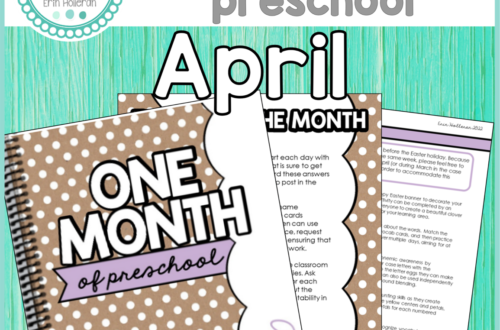Preschool Curriculum Part 1
Curriculum is important, it gives you a path to follow as you plan activities for your students. Ideally, a curriculum should help you make sure that your students are receiving a well rounded educational experience. There are so many curriculum options to choose from, should you buy a “curriculum in a box” or follow a loos, theory based approach? How do you decide?
I’ve had this conversation with enough preschool teachers and administrators to know that it is an important issue, but the decision isn’t an easy one to make. I’m going to share my research with you, so that you can get a better picture of the options that are available.
It is important to note that I am not endorsing a particular curriculum throughout these posts. this series of posts is not sponsored by anyone and I’ve chosen the featured curriculum based on it’s popularity and the fact that the components are developmentally appropriate for use in the preschool classroom.
Today I’ll compare and contrast Reggio Emilia, Montessori, and Waldorf approaches to teaching and learning in preschool. These approaches are similar in that they are more than just a set of lesson plans. Each of these teaching approaches is centered around a set of beliefs about how children learn best.
Reggio Emilia
According to the Reggio Emilia Philosophy, children learn best when they are actively involved in the educational process. Children are taught to explore materials and investigate concepts in order to come to a better understanding of the world around them. Reggio Emilia views the environment, families, and the community as partners in education. Teachers work with these partners to facilitate projects that help children seek out the answers to their own questions about the things that they come into contact with every day. Reggio Emilia places a large amount of emphasis on different ways that children communicate their knowledge, offering endless opportunities for creative expression. The belief is that when children are able to share their knowledge and understanding with others, they are able to take ownership of their role in the learning process, and feel empowered and motivated in their own education.
Teachers who subscribe to the Reggio Emilia Philosophy take care to observe their students regularly and often. They use these observations to assess children’s comprehension, and to make sure that they are offering opportunities for children to continue exploration. Teachers are considered “facilitators” who are tasked with helping children focus their exploration, and encourage conversation and critical thinking.
For more information on Reggio Emilia please check out this great article!
Montessori
The Montessori Method also views the child as an eager participant in the learning process. A Montessori classroom is carefully arranged to support learning, and children are given ample time each day to work on their own or with peers on topics of their own choosing. The Montessori classroom will always include certain materials, which have been designed to ensure that children learn one specific concept at a time, however, these materials may be revisited throughout the year so that children can build upon their understanding of the concept. As children grow, new concepts are introduced, using many of the same materials that they are already familiar with.
Children in a Montessori classroom are encouraged to treat their materials, and each other with the utmost care and respect. Peace and harmony are important to the learning process, and children are taught to take care when using materials, returning them to their proper place, and moving around the classroom, in order to help children learn to live as members of a community. Montessori Teachers often work one-on-one with their students, reviewing their work, or guiding them in learning new concepts. They may also spend time observing the children as they work in order to give the children opportunities to practice the skills on their own.
This article gives a more in-depth explanation of the Montessori Method.
Waldorf
The Waldorf School places huge emphasis on the imagination, believing that children are able to explore life through the scenarios that they act out during play. Children also use toys that encourage the use of the imagination; wooden pieces, stones, and cotton scarves become whatever children need them to be. There is also an emphasis on practical skills, and teachers will engage in activities that children can participate in and replicate such as gardening and baking. The Waldorf school is highly play based, but the daily routine is predictable, giving children some structure.
For more information on Waldorf schools, please check out this article.
These three philosophies are by no means the only kinds of preschools to choose from, in my post tomorrow I’ll explore three types of curriculum that are commonly found in Preschools throughout the United States.

